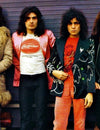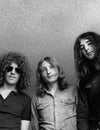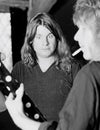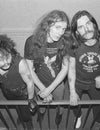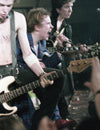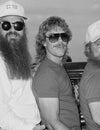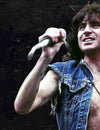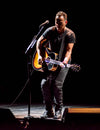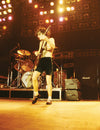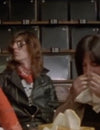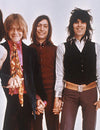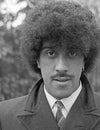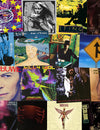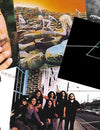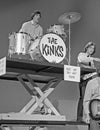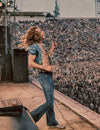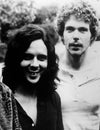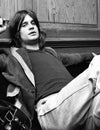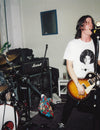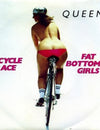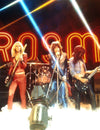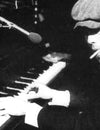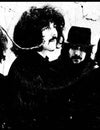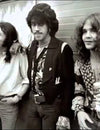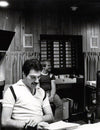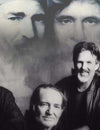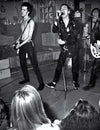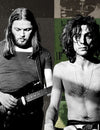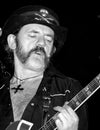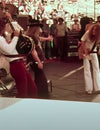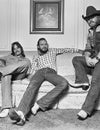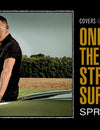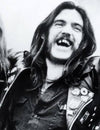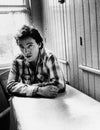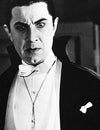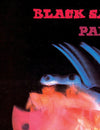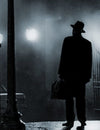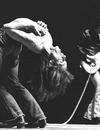
Tom Waits: The Jazz Years
The intoxication of youth shapes people in unexplainable ways. It opens unseen doors and locks others shut forever. The ability to make sense of it isn’t required; all that’s required is an exit. Creativity can be expressed in countless ways, and it must be allowed to escape into the world if you’re to be free. Fear of it going unheard, unappreciated, or misunderstood can’t be your primary motivation.
In 1973, twenty-four-year-old Tom Waits released his first album, “Closing Time.” Inspired by piano-led jazz music, Bob Dylan and the Beat Generation, the ten-track album failed to garner any commercial success. That was of little consequence to Waits. The Eagles released a cover of “‘Ol 55” on their album, “On the Border.” It gave him exposure and made him some money, but he was left unimpressed. He concluded their version was “a little antiseptic.” He rejected the idea that materialism outweighed spiritual values and continued to express the depths of his mind, unconcerned about the expectations of the record label.
He says about being popular: “..the odd thing about this life is always that you spend half your time trying to get people to listen to you and the rest of the time trying to get them to leave you the fuck alone.” Considering his appreciation of writers like Charles Bukowski, Jack Kerouac, Allen Ginsberg, and William S. Burroughs, it’s a fitting outlook.
On The Road
Before recording material for his second album, his manager, Herb Cohen, convinced him to join Frank Zappa’s band, The Mothers of Invention, on tour as an opening act. He was told it would be good for his career. Tom wanted to stay hunkered down in the studio and get his new material produced, but he agreed to hit the road and played some shows with Zappa. It was short-lived as he, like the previous opener Kathy Dalton, left the tour. The crowds were hostile towards him, often pelting him with fruit, and he admitted that he was intimidated by Zappa.
He went back to the studio to record his second album, “The Heart of Saturday Night.” The title track was a tribute to Jack Kerouac, and the album cover pays homage to Frank Sinatra’s “In the Wee Small Hours.” His love for the off-beat, dark, and tortured after-hours-tavern-life made him favor recording in the early morning hours. He preferred sitting in the studio at three am instead of the regular nine-to-five grind.
“I used to think that all great recordings happened at about 3am..So my first studio experiences, I wanted to be recording after the bars closed. I just thought that's when it all happened,” he said in a 2011 interview. That would change for him later in his life: “..it worked for me for a while, I guess. But I don't believe that so much anymore. I realize now there's more than one way to sneak up on a herd of cattle…"
The album wasn’t the breakthrough his record label, David Geffen’s Asylum Records, had hoped for, but it’s appreciated today as being his most mature, honest work. “Shiver Me Timbers” is one of his most covered songs. Bette Midler, James Taylor, and Holly Cole have all released versions of it. He maintained the same understated, poetic storytelling that sucked listeners into the detour in which he lived.
Tom insisted on living a simple, modest lifestyle while on the road. When the label booked a room at the Holiday Inn, he refused to stay there and got a room in a dive instead. His music represented the downtrodden, against-the-grain-class of society and it worked because he lived it. In early 1976, after his first tour of Europe, he moved into a two-room apartment at the Tropicana Motel in West Hollywood. It was a mess of empty liquor bottles, soup cans, and overflowing ashtrays. Friends have called it a “haven of poverty,” to which Waits responded: “You almost have to create situations in order to write about them, so I live in a constant state of self-imposed poverty.”

Staying The Course
On smoking: “I’m like everybody else, quit a hundred times. It’s a companion and a friend … I would take a pack of cigarettes and dig a hole in the backyard and piss on them and bury ’em. Dig ’em up and an hour later, dry them in the oven and smoke. That’s how bad I had it.”
Many artists can relate to addiction, and maybe none more than Keith Richards. Keith has played on many of Waits’ albums, beginning with 1985’s “Rain Dogs.” They share a certain look and stigma, but it’s Richards’ aversion to using generic studio effects during the recording process that Waits relates to most:
“If I want a sound, I usually feel better if I’ve chased it and killed it, skinned it, and cooked it.” That feeling certainly shows itself in his early music.
It was in late 1976 that commercial success found Waits. His fourth album, “Small Change,” debuted at number eighty-nine on the Billboard Chart and represented what Tom considers to be “his finding confidence in the craft.” It’s considered to be his masterpiece work and was the catalyst for a much larger following.
He was stalked by a female fan after she escaped from a mental institution. She waited for him to come and go, outside of his apartment at the Tropicana. In early 1977, Waits and a friend were charged with disturbing the peace after fighting with police officers in a coffee shop. The cops lied about what happened, as eight witnesses testified to, and the charges were dropped. Waits sued the police department and was rewarded with a seventy-five hundred dollar settlement.
A Good Yarn
His musical style changed in the 1980s, though was still distinctly “Tom Waits.” What hasn’t changed and what he’ll be most remembered by was his wit. The stories he’s told unlock the mystery of his songwriting. Being a high school dropout, and instead seeking a spiritual education through the words of Jack Kerouac and others, have honed his craft. He’s told countless stories that have become timeless:
“There's no one really in show business in my family but there were two relatives who had an effect on me very young and shaped me in some way. They were Uncle Vernon and Uncle Robert. I always hated the sound of my voice when I was a kid. I always wanted to sound more like my Uncle Vernon, who had a raspy, gravelly voice. Everything Uncle Vernon said sounded important, and you always got it the first time because you wouldn't dare ask him to repeat it. Eventually, I learned that Uncle Vernon had had a throat operation as a kid and the doctors had left behind a small pair of scissors and gauze when they closed him up. Years later at Christmas dinner, Uncle Vernon started to choke while trying to dislodge an errant string bean, and he coughed up the gauze and the scissors. That's how Uncle Vernon got his voice, and that's how I got mine- from trying to sound just like him.”
“On Sundays, we'd always visit Uncle Robert, who was the organist at a methodist church in La Verne, California. Uncle Robert had a pipe organ in his house that went right through the roof. When he would play he would smear all the notes together like hot melted crayons and the whole house would shake.
I remember his house was a complete mess; his clothes were everywhere, his bed was never made. "Now this is show business," I thought to myself. I asked my mom why I couldn't keep my room like Uncle Robert's, and she said, "Tom, your Uncle Robert is blind."
“I have learned a great deal about music from other musicians, and from listening to the world around me. But when I was a kid growing up in Whittier, there was a red-headed boy named Billy Swed(1) who lived with his mom in a trailer by the railroad tracks. Billy is the one who taught me how to play in a minor key.
Billy didn't go to school. He was already smoking and drinking at the age of 12, and he lived with his mom at the edge of a hobo jungle on a mud rain lake with tires sticking up out of it. There was blue smoke, dead carp, and gourds as big as lampshades. You could get lost trying to find their place--through overgrown dogwood and pyracantha bushes, through a culvert under a freeway, and through canyons littered with mattresses and empty paint cans. While Billy taught me how to play, I noticed that he liked to draw on his jeans with a pen. Every inch was covered with these strange forbidden hieroglyphic tattoos that I was constantly trying to decipher. I was certain it was his own musical notation and that he had hundreds of songs written on his pants. Billy's mother was enormous. I would look at her and then at the door to the trailer, and then back to her, and faced my first real math problem. How could Mrs. Swed ever get through that door? As an eight-year-old, I remember thinking that Mrs. Swed was like a ship in a bottle and she would never be able to leave. Somehow the trailer, the swamp, and Mrs. Swed all came out of Billy's guitar in a minor key.”






